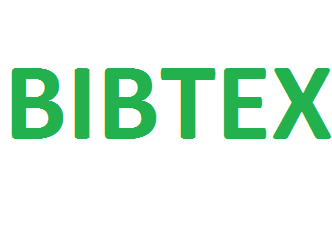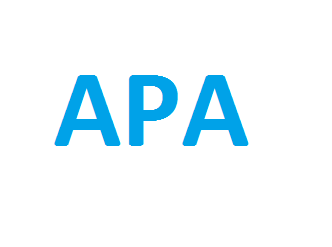
The Academic Perspective Procedia publishes Academic Platform symposiums papers as three volumes in a year. DOI number is given to all of our papers.
Publisher : Academic Perspective
Journal DOI : 10.33793/acperpro
Journal eISSN : 2667-5862
A Series Hybrid Electric Vehicle Simulation and Analysis of Fuel Consumption Alteration in Different Driving Cycles
Onur Serin;Dilara Albayrak Serin
1507
634
Abstract
With decrease in amount of carbon fuels and aims of creating a cleaner environment, researches on hybrid electric vehicle technology have increased in years. The purpose of this study is to observe the change in fuel consumption of a simulated hybrid electric vehicle in different driving cycles. For this research, a series hybrid electric vehicle is modelled on MATLAB/Simulink. Subsequently, for simulating the tour of the vehicle, multiple driving cycles are modelled on the software and fed to vehicle model. For instance FTP-75, NEDC and UDDS are benefited and also a route from Turkey, the road from Istanbul to Ankara is modelled and simulated. Behavior of the vehicle on this route is also observed. After analyzing vehicle behavior in all these cycles, fuel consumption in each case is calculated and compared. As the result of this research, the most affordable cycle for this vehicle model is selected and possible ways of decreasing fuel consumption in other driving cycles is discussed.
Keywords:
Driving cycles, fuel consumption, hybrid electric vehicles, simulation
References
[1] A. Sciarretta and L. Guzeella, “Control of Hybrid Electric Vehicles,” IEEE Control Systems Magazine, vol. 27, no. 2, pp. 60-70, 04 2007.
[2] OECD/IEA, “Global EV Outlook 2017,” OECD, 2017.
[3] Y. Zhao, M. L. Kuang, A. M. Phillips and J. Kristionsson, “Path-forecasting for HEV Optimal Energy Management (POEM),” in American Control Conference (ACC), Boston, MA, USA, 2016.
[4] C. Patil, P. Naghshtabrizi, R. Verma, Z. Tang, K. Smith and Y. Shi, “Optimal BAttery Utilization OVer Lİfetime For Parallel Hybrid Electric Vehicle to Maximize Fuel Economy,” in 2016 American Control Conference (ACC), Boston, MA, USA, 2016.
[5] C. Guardiola, B. Pla and G. Rizzoni, “Insight into the HEV/PHEV Optimal Control Solution Based on a New Tuning Method,” Control Engineering Practice, vol. 29, pp. 247-256, 2014.
[6] V. H. Johnson, K. B. Wipke and D. Rausen, “HEV Control Strategy for Real-Time Optimization of Fuel Economy and Emissions,” National Renewable Energy Laboratory, 2000.
[7] D. Albayrak Serin and M. A. Özpınar, “Modeling and Simulation of Driving Performance in a Series Hybrid Electric Vehicle,” in 9th International Automotive Technologies Congress, OTEKON 2018, Bursa, Turkey, 2018.
[8] B. Degraeuwe and M. Weiss, “Does the New European Driving Cycle (NEDC) really fail to capture the NOX emissions of diesel cars in Europe?,” Environmental Pollution, vol. 222, pp. 234-241, March 2017.
[9] G. Zhu, J. Liu, J. Fu, Z. Xu, Q. Guo and H. Zhao, “Experimental study on combustion and emission characteristics of turbocharged gasoline direct injection (GDI) engine under cold start new European driving cycle (NEDC),” Fuel, vol. 215, no. 1, pp. 272-284, March 2018.
[10] M. Tutuianu, A. Marotta, H. Steven, E. Ericsson, T. Haniu, N. Ichikawa and H. Ishii, “Development of a World-wide Worldwide harmonized Light duty driving Test Cycle (WLTC),” Development of the Harmonized driving Cycle (DHC) Sub-group, 2014.
[11] U. S. E. P. A. (EPA), “Vehicle and Fuel Emissions Testing Dynamometer Drive Schedules,” 31 01 2017. [Online]. Available: https://www.epa.gov/vehicle-and-fuel-emissionstesting/dynamometer-drive-schedules. [Accessed 15 08 2018].
[12] E. Nam, “Drive Cycle Development and Real-world data in the United States,” United NAtions Economic Commission, Geneva, Switzerland, 2009.
[13] J. W. Whitefoot, K. Ahn and P. Y. Paplambros, “The Case for Urban Vehicles: Powertrain Optimization of a Power-split Hybrid for Fuel Economy on Multiple Drive Cycles,” in ASME
2010 International Design Engineering Technical Conferences & Computers and Information in Engineering Conference, Montreal, Quebec, Canada, 2010.
[14] “EPA New York City Cycle (NYCC),” [Online]. Available: https://www.dieselnet.com/standards/cycles/nycc.php. [Accessed 15 08 2018].
[15] R. Nicolas, “The different driving cycles,” 01 05 2013. [Online]. Available: http://www.carengineer.com/the-different-driving-cycles/. [Accessed 19 08 2018].
[16] S. E. Corporation, Panasonic Lithium Ion NCR18650B, 2012.
[17] V. Boscaino and R. Miceli, “Analysis of driving cycles effects on power supply requirements of a fuel cell powered light-weight electric vehicle,” in 2015 IEEE International Electric Machines & Drives Conference (IEMDC), Coeur d'Alene, ID, USA, 2015.
[18] L. Tang and G. Rizzoni, “Energy Management Strategy Including Battery Life Optimization for a HEV with CVT,” in 2016 IEEE Transportation Electrification Conference and Expo, Asia-Pacific, Busan, Korea, 2016.
[19] O. Karabasoglu and J. Michalek, “Influence of Driving Patterns on Life Cycle Cost and Emissions of Hybrid and Plug-In Electric Vehicle Powertrains,” Energy Policy, vol. 60, pp. 445-461, 2013.
Cite
-
 @article{acperproISITES2018ID30, author={Serin, Onur and Serin, Dilara Albayrak}, title={A Series Hybrid Electric Vehicle Simulation and Analysis of Fuel Consumption Alteration in Different Driving Cycles}, journal={Academic Perspective Procedia}, eissn={2667-5862}, volume={1}, year=2018, pages={138-147}}
@article{acperproISITES2018ID30, author={Serin, Onur and Serin, Dilara Albayrak}, title={A Series Hybrid Electric Vehicle Simulation and Analysis of Fuel Consumption Alteration in Different Driving Cycles}, journal={Academic Perspective Procedia}, eissn={2667-5862}, volume={1}, year=2018, pages={138-147}} -
 %0 Academic Perspective Procedia (ACPERPRO) A Series Hybrid Electric Vehicle Simulation and Analysis of Fuel Consumption Alteration in Different Driving Cycles% A Onur Serin , Dilara Albayrak Serin% T A Series Hybrid Electric Vehicle Simulation and Analysis of Fuel Consumption Alteration in Different Driving Cycles% D 11/9/2018% J Academic Perspective Procedia (ACPERPRO)% P 138-147% V 1% N 1% R doi: 10.33793/acperpro.01.01.30% U 10.33793/acperpro.01.01.30
%0 Academic Perspective Procedia (ACPERPRO) A Series Hybrid Electric Vehicle Simulation and Analysis of Fuel Consumption Alteration in Different Driving Cycles% A Onur Serin , Dilara Albayrak Serin% T A Series Hybrid Electric Vehicle Simulation and Analysis of Fuel Consumption Alteration in Different Driving Cycles% D 11/9/2018% J Academic Perspective Procedia (ACPERPRO)% P 138-147% V 1% N 1% R doi: 10.33793/acperpro.01.01.30% U 10.33793/acperpro.01.01.30
© Academic Perspective 2018. All rights reserved.



